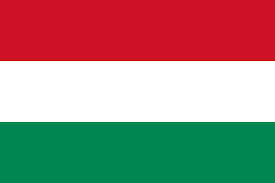Hungary flag Colors Code hex, png svg
History of the Hungarian Flag
The history of the Hungarian flag is deeply intertwined with the nation’s tumultuous history and its quest for sovereignty and identity. Here is an overview of the key historical milestones related to the flag:
- Medieval Times: The earliest versions of the Hungarian flag date back to medieval times, featuring the red and white stripes, which were derived from the Hungarian coat of arms. The stripes symbolized the Árpád dynasty, which ruled Hungary from the 9th to the 14th centuries.
- 16th-18th Centuries: During the Ottoman occupation (16th-17th centuries) and the subsequent Habsburg rule (17th-18th centuries), various flags were used, but the red and white stripes remained a consistent element.
- Revolution of 1848: The modern tricolor (red, white, and green) was officially adopted during the Hungarian Revolution of 1848, a national uprising against Habsburg rule. This period was crucial in solidifying the tricolor as a symbol of national unity and independence.
- 20th Century: After the Austro-Hungarian Compromise of 1867, the flag continued to be used, and it remained a symbol of the Hungarian state through the tumultuous 20th century, including World War I, the interwar period, World War II, and the communist era.
- Post-Communist Era: After the fall of communism in 1989, Hungary reestablished itself as a democratic republic, and the tricolor flag was reaffirmed as the national symbol.
Colors and Their Meanings
The Hungarian flag consists of three horizontal stripes: red, white, and green. Each color holds specific historical and cultural significance:
- Red: The red stripe symbolizes strength, courage, and the blood shed for the country’s independence and freedom.
- White: The white stripe represents faith, purity, and freedom. It is also associated with the silver found in the Hungarian coat of arms.
- Green: The green stripe stands for hope, agriculture, and the lush landscapes of Hungary. It reflects the nation’s natural beauty and its connection to the land.
Conclusion
The Hungarian flag is a powerful emblem of national identity, resilience, and pride. Its colors and design reflect Hungary’s rich history, cultural heritage, and the enduring spirit of its people.
Guess the Flags Quiz
Sharing is caring 🤗

National Symbols 👇
- 🏁 National Flags
- 🦁 National Animals
- 🐦 National Birds
- 🌻 National Flowers
- 🌴 National Trees
- 🥭 National Fruits
- 🍹 National Drinks
- 👴 National Founders
- ☘️ National Emblems
- 🍲 National Dishes
- 🏛️ National Monuments
- ✍️ National Poets
- 🕌 National Mausoleums
- 🎺 National Instruments
- 🦸 National Heroes
- 📆 National Days

